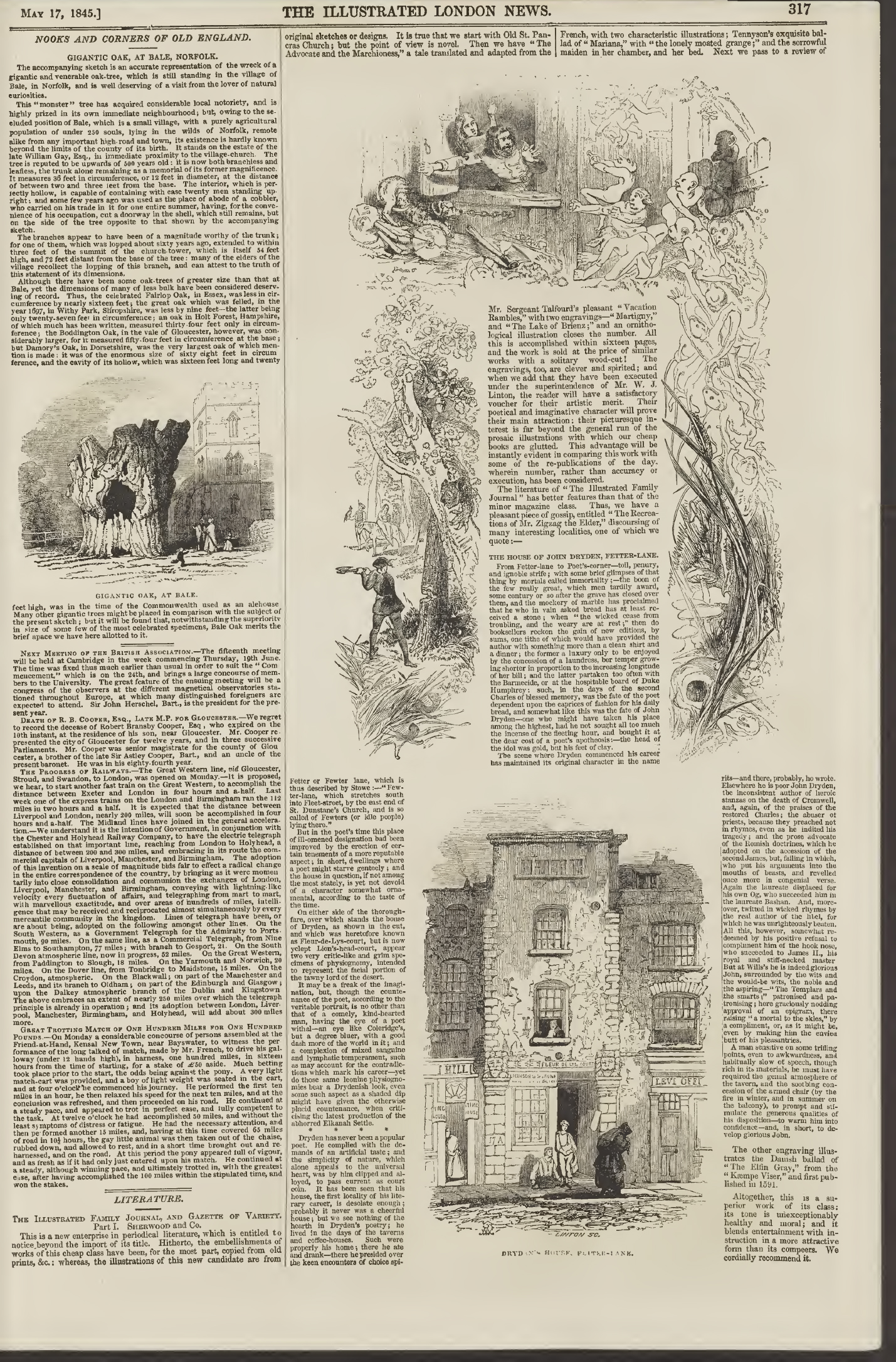

|
Początki brytyjskiej, francuskiej i
niemieckiej prasy ilustrowanej oraz jej wpływ na polskie czasopisma i
komiks
Rozdział książki / Chapter of the book (pdf) Fragment książki: Jak
Pan się czuje Mister Punch? Wprawdzie Kanał Angielski nazywany jest na całym świecie Kanałem La Manche, ale w dziedzinie czasopism ilustrowanych to Anglicy wyprzedzali Francuzów. O ile więc paryscy i europejscy wydawcy starali się naśladować „L’illustration”, to ten tytuł bardzo przypominał założony ponad rok wcześniej tygodnik „The London Illustrated News”. I to był pierwszy na świecie magazyn ilustrowany nowego typu. Przede wszystkim widzimy już trójkolumnowy podział strony i bardzo swobodne rozmieszczenie obrazów, które „wcinają się”, a nawet pozwalają „oblewać” tekstem. Rozplanowanie szpalt też już nie przypomina tradycyjnej książki lub czasopism o kilka lat starszych, po których widać jeszcze niedoskonałość technik drukarskich, które nie pozwalały swobodnie łączyć tekstu z ilustracją. Założycielem „The London Illustrated News" był dziennikarz, ale zarazem właściciel sklepiku z gazetami – Herbert Ingram (1811-1860). Sprzedając m.in. „Puncha”, który istniał już od ponad roku, ale na razie charakteryzował się dość ubogą warstwą ilustracyjną, złożoną z dużej ilości, ale malutkich rysuneczków, zaczął dostrzegać, że tytuł zawierający obrazki sprzedaje się o wiele lepiej od zawierającego tylko teksty. Ingram podpisał kontrakty z dziennikarzami, grafikami i rytownikami, wynajął kilkuset mężczyzn, którzy z plakatami reklamowymi maszerowali ulicami Londynu. Pierwszy numer sprzedał się w nakładzie 26 tys. egzemplarzy. Czytelnikom bardzo spodobały się liczne ryciny i trochę sensacyjno-plotkarski ton artykułów.
|
Paweł Chmielewski "Various species of locusts. Illustrative cycles and comic book forms in the Polish press of the 19th
century"
How are you feeling Mister Punch? |
"PROJEKTOR" - kielecki magazyn kulturalny
Paweł Chmielewski (redaktor
naczelny)
Wydawca: Stowarzyszenie Twórcze "Zenit", ul. Zbożowa 4 lok.
11, 25-416 Kielce www.zenit.org.pl
Kontakt: projektorkielce[at]onet.eu lub
605 343 341
Copyright by Stowarzyszenie Twórcze "Zenit".
Kopiowanie treści bez zezwolenia wydawcy jest naruszeniem ustawy o prawach autorskich.

